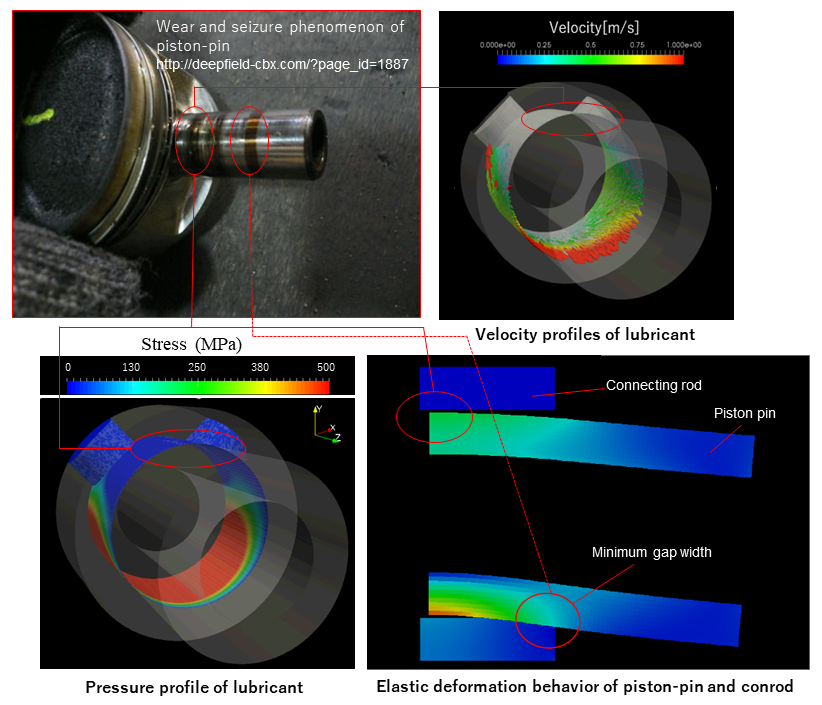 Development of a Numerical Prediction System for Sliding Part Wear and Seizure Occurrence Portions
Development of a Numerical Prediction System for Sliding Part Wear and Seizure Occurrence Portions
- Overview of Technology
Focusing on the lubricant film flow with phase change between the engine piston pin and connecting rod small end, we developed a new multiphase fluid-structure coupled analysis method that takes into account elastic deformation of the structure and flow path changes and developed a simulation prediction method for tribological properties under high load conditions. The simulation prediction method for tribological properties under high load conditions has been created. As a result, we succeeded in simulation prediction of the wear/seizure generating areas in sliding parts. We discovered that the peculiar deformation behavior of the components is the cause of wear/seizure.
- Comparison with Conventional Technology
It has been thought that computational prediction is impossible to verify the wear and seizure locations in fluid lubrication. Still, this study succeeded in the simulation prediction of wear and seizure locations in sliding parts.
- Features and Uniqueness
-
Numerical prediction of the wear and seizure locations in the sliding parts of engine piston pins was successfully performed.
The bow-like deformation of the piston pin was identified as the cause of mechanical contact and seizure at the connecting rod edge.
A three-dimensional multiphase fluid-structure coupled analysis method has been successfully developed, considering the piston pin's elastic deformation and connecting rod and thin-film cavitation1 lubrication with unsteady flow path changes. - Practical Application
-
This research method applies to automotive engines and all sliding component elements using fluid lubrication. It contributes to damage prediction and the development of safety guidelines for transportation and industrial machinery components, enabling the optimal design of components.
- Keywords


 Medical
Medical
 Life Sciences
Life Sciences
 Information Communication
Information Communication
 Environment
Environment
 Nanotechnology / Materials
Nanotechnology / Materials
 Energy
Energy
 Social Infrastructure
Social Infrastructure
 Frontier
Frontier
 Human and social sciences
Human and social sciences


